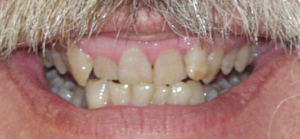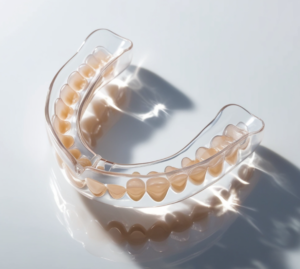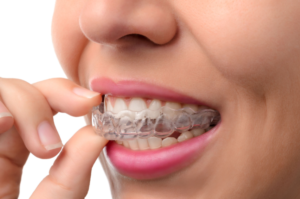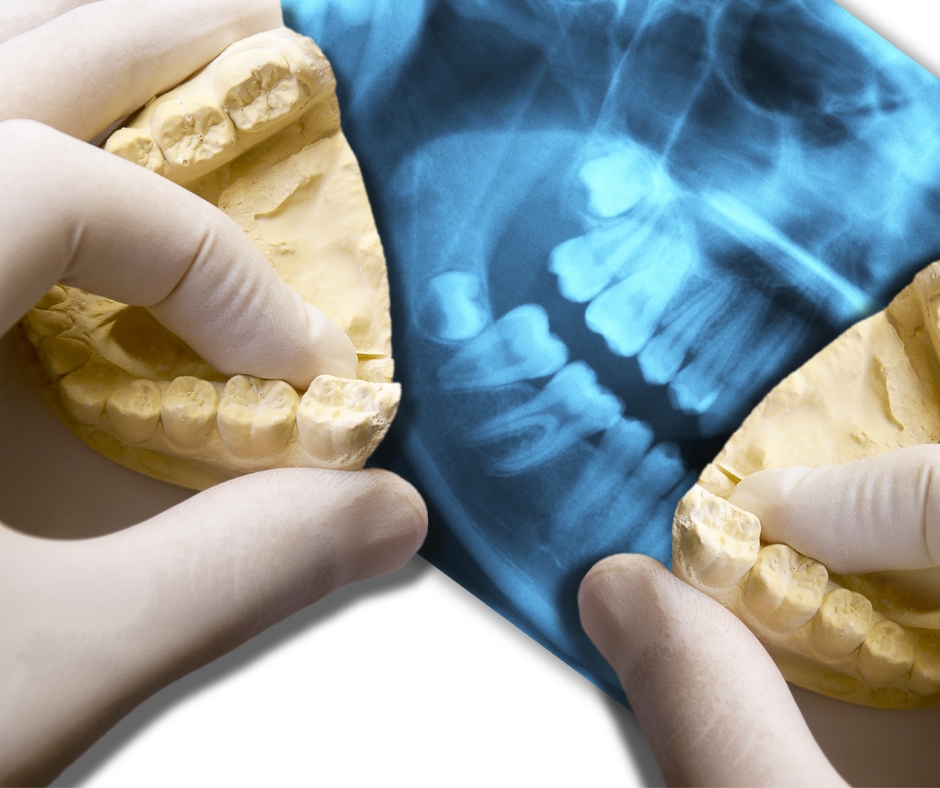Smiling is a part of your personality, but crooked teeth can affect more than your smile aesthetic, it can affect oral health, speech, and even your self-confidence.
Fortunately, modern orthodontics offers an effective, discreet solution for the treatment of crooked teeth beyond metal braces which are aligners.
Clear aligners are revolutionary approaches to straightening crooked teeth that have gained popularity recently.

Crooked teeth are a common dental problem in children and adults(affects all ages).
Crooked teeth are misaligned teeth that can be growing in the wrong position, twisted, or overlapping other teeth.
Causes of crooked teeth
- Genetic cause:
If one or both of your parents has crooked teeth, you may inherit it.
You can also inherit certain characteristics that cause crooked teeth such as extra teeth, abnormally large teeth, or misaligned jaw.
- Jaw size:
Small jaw size may be responsible for misaligned teeth, as there is
insufficient space for all teeth to erupt properly, crowding occurs leading to
pushing teeth out of alignment.
- Jaw Injuries: Trauma to the jaw can affect tooth alignment and jaw development.
- Early loss of baby teeth:
Premature loss of baby teeth leaves gaps that can affect the normal eruption of
permanent teeth, so some of the other teeth could have shifted into the area
leading to misalignment of the teeth.
- Bad habits:
repeated behaviors such as thumb sucking, tongue thrusting, mouth
breathing, pacifier use beyond the age of three, or prolonged use of bottles,
can affect muscles and functions of the face, and exert pressure on
developing teeth causing them to shift from their normal positions.
- Poor nutrition:
Especially in children can lead to tooth decay, poor dental development, and
affect jaw development resulting in crooked teeth.
Problems caused by crooked teeth
- Can affect self-confidence, some people may stop smiling or even avoid social situations.
- It’s hard to clean between crooked teeth, so food particles can be trapped increasing the risk of cavities, and plaque build-up which may lead to gum diseases and even infections if not treated.
- Jaw Pain: In some cases, crooked teeth can strain the jaw muscles and joints, leading to jaw pain and discomfort.
- Misaligned teeth can make chewing food properly difficult, causing discomfort and potential digestive problems.
- It can affect speech clarity, as teeth have a role in pronouncing certain words.
- Crooked teeth are more exposed to wear, rubbing of teeth against each other can slowly wear the protective enamel layer which can result in cracking of the teeth, and temporomandibular joint disorders.
- Crooked teeth may cause frequent headaches
What are aligners?

Aligners are the aesthetic alternative to metal braces, clear aligners are nearly invisible, so it’s unlikely to be noticed by other people.
They are made of smooth flexible transparent medical-grade plastic, such as polyurethane or ethylene vinyl acetate, also they are custom-formed to fit your mouth.
How do aligners work?

- Aligners are designed to shift teeth to their proper position by using different sets of aligners.
- Each set of aligners applies gentle, consistent pressure to move teeth a small distance to their proper position.
- This gradual shifting allows your teeth to move comfortably and efficiently.
- The total number of aligners and the time you wear them will depend on the diagnosis of your case.
- To obtain satisfying results, you must wear them for 20-22 hours each day for a week or two(according to instructions of your orthodontist).
- You can take your aligners off to eat, drink, or brush your teeth.
Can aligners fix crooked teeth?
Aligners can be highly effective in the treatment of mild to moderate cases of crooked teeth as:
- Crowding: When teeth are too close together.
- Spacing: When there are gaps between teeth.
- Overbite: When the upper teeth significantly overlap the lower teeth.
- Underbite: When the lower teeth protrude beyond the upper teeth.
The Treatment Process:
- Initial consultation with an orthodontist is necessary to determine whether you are suitable for aligner treatment or not.
- 3D scans or impressions will be taken to create a digital model of your teeth.
- The orthodontist will customize the treatment plan, including the number of aligner sets needed and the expected duration of treatment.
- You will wear the aligners according to the instructions of your orthodontist.
- The average treatment period is 12-18 months but it may vary according to the case.
- Regular checkups with your orthodontist are important to monitor progress and make any necessary changes in the treatment plan.
Advantages of Using Clear Aligners:
- They are more comfortable than metal braces as they are custom-made to fit in the mouth, causing little irritation to the mouth.
- Aligners can be removed for brushing and flossing, this allows you to maintain oral hygiene and reduce the risk of cavities and gum diseases.
- The invisibility of clear aligners makes them more discreet and aesthetic for those concerned about the appearance of traditional braces.
- Clear aligners can be faster treatment than traditional braces, depending on the severity of the case.
The bottom line: clear aligner therapy is a safe, effective, and convenient orthodontic treatment that offers treatment for mild to moderate cases of crooked teeth.
Aligners are almost invisible, and it’s suitable for teens and adults, but you should follow your orthodontist’s instructions thoroughly to achieve the desired result of the treatment.
References
- https://journals.lww.com/joos/fulltext/2023/09040/clear_aligner_therapy
- https://www.healthline.com/health/dental-and-oral-health/crooked-teeth.




